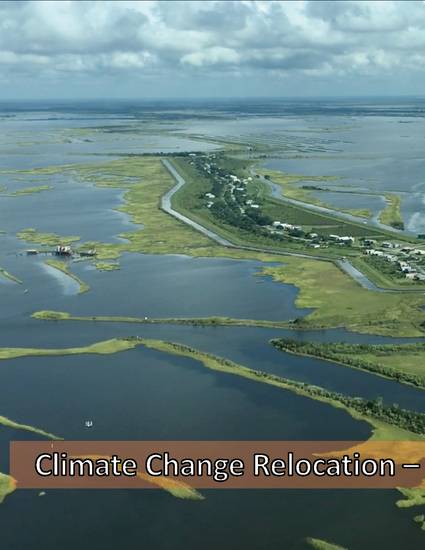
Presentation
Moving Communities: Climate change and the possibilities of protected land
7th Fábos Conference on Landscape and Greenway Planning
(2022)
Abstract
The distant prospect of moving communities due to climate change is here – in the United States
and around the world. For villages such as Newtok in Alaska and Ile de Jean Charles in Louisiana,
sea level rise and increasing storm events has made the communities unlivable: salinization of
wells, melting of permafrost, shoreline erosion and the repeated storm damage has made the
option to move the only choice (Kay 2019; Galik and Smith 2020).
However, the movement of whole communities requires sufficient land area to support the
relocation of tens to hundreds of households. It is not only the households that must be moved,
but people’s livelihoods, community social structure, and in many cases a shared sense of
heritage.
Currently, a number of the communities in the United States who are in the active process of
moving are relocating to government-owned or protected lands. Internationally, National Parks
in African countries such as Kenya and Tanzania have served for years as temporary or even
semi-permanent camps that can house refugees fleeing war and famine (Odenigbo 2016). This
is likely to become a reality for community displacement and relocation facing both the developed
and developing worlds.
Given the scope of the movement of communities out of the way of flooding, extreme storm
events, wildfires and drought, planners need to consider the available lands that could
accommodate these communities. Protected lands and open space as a national resource
provide opportunities and constraints for displaced communities. This paper reviews the legal
constraints in the United States to the use of protected open space for community
relocation. Whether government owned or held under perpetual easements by community land
trusts or other NGOs, community open space may provide the best – or only - options for
community relocation.
Keywords
- climate change migration,
- climate change relocation
Disciplines
Publication Date
June 30, 2022
Location
Budapest, Hungary
Comments
Link to conference abstracts: https://sites.google.com/view/fabos2022/home/publication, archived at https://perma.cc/Z2X7-NE94.
Citation Information
Brabec, Elizabeth. 2022. Moving Communities: Climate change and the possibilities of protected land. In Keszthelyi, Á. B., Jombach, S., Valánszki, I., Filep-Kovács, K., Ryan, R. L., Ahern, J.,
Eisenman, T., Lindhult, M. S., Kollányi, L., Fábos, J. Gy., (Eds.) 2022: Moving Towards
Health and Resilience in the Public Realm – Book of Abstracts, 7th Fábos Conference on
Landscape and Greenway Planning (Budapest, 30. June – 03. July 2022). Accessed https://sites.google.com/view/fabos2022/home/publication, archived at https://perma.cc/Z2X7-NE94.
Creative Commons License

This work is licensed under a Creative Commons CC_BY-NC-ND International License.
